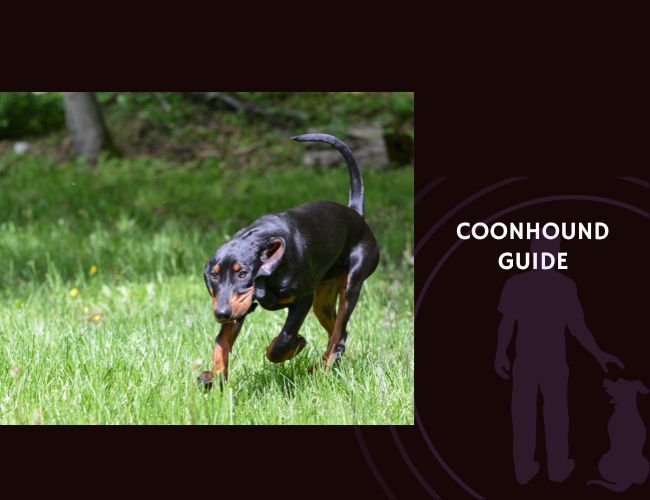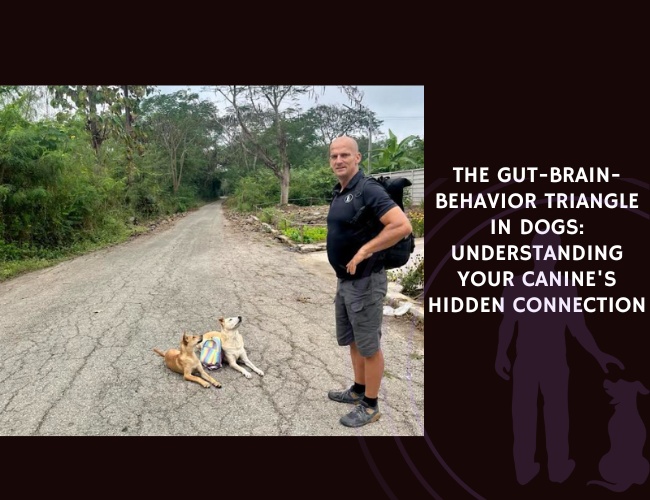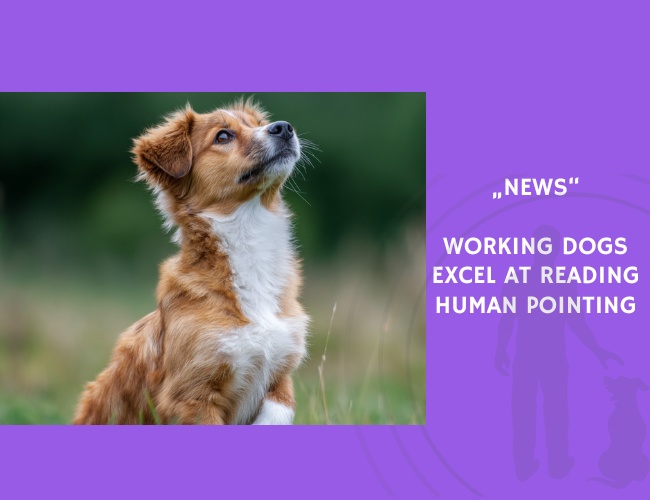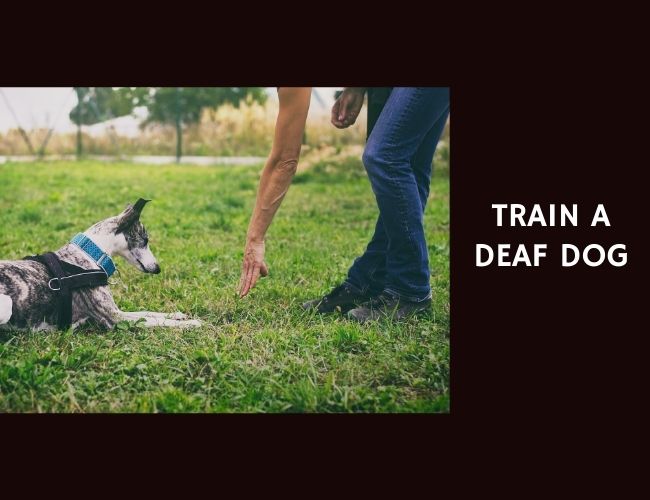Picture this: a warm Southern evening, the moon rising over the Appalachian foothills, and the distinctive melodic bay of a Coonhound echoing through the trees. This is the sound of American heritage—a voice that has accompanied hunters, families, and adventurers for over three centuries. Whether you’re drawn to their soulful eyes, their remarkable scenting abilities, or their loyal companionship, Coonhounds offer a unique window into the deep partnership between humans and working dogs that shaped the nation.
Let us guide you through the fascinating world of these six remarkable breeds, each with its own story to tell. From the gentle Black and Tan to the spirited Treeing Walker, these dogs carry within them the independence of frontier life and the warmth of Southern hospitality. Did you know that despite their hunting prowess, many Coonhound owners describe them as “professional couch warmers” when off duty? This delightful contradiction is just one of many surprises awaiting you in your journey with these exceptional dogs. 🐾
Character & Behavior: Understanding Your Coonhound’s Heart and Mind
The Heritage That Shapes Them
Your Coonhound’s personality isn’t just a product of training—it’s written in their DNA through centuries of selective breeding. When English Foxhounds first arrived with colonial settlers in the 17th century, they encountered an entirely new world. The rugged American terrain, novel game species, and the independent spirit of frontier life demanded dogs that could think for themselves, work tirelessly through the night, and communicate across vast distances.
These early breeders created something remarkable: dogs with “cold noses” capable of following scents that were days old, voices that could carry for miles, and the stamina to work from dusk until dawn. Your furry friend carries this legacy in every sniff, every bay, and every determined pursuit of that fascinating smell in the backyard. Understanding this heritage helps you appreciate why your Coonhound might seem to have selective hearing when they catch an interesting scent—they’re not being stubborn; they’re being exactly what generations of careful breeding designed them to be.
The Appalachian settlers who refined these breeds needed dogs that matched their own “sturdy, spirited, and hardscrabble” nature. This means your modern Coonhound possesses an independence that sets them apart from breeds developed to work in close partnership with humans. They see you less as a master and more as a trusted companion on life’s adventures.
Meet the Magnificent Six: Each Breed’s Unique Personality
Every Coonhound breed brings its own special flavor to the family dynamic. Let’s explore what makes each one unique:
The Black and Tan Coonhound, first registered by the AKC in 1945, is often described as the gentleman of the group. With their sweet disposition and unwavering loyalty, they form incredibly strong bonds with their families. You might notice your Black and Tan choosing one family member as their special person—don’t take it personally if you’re not the chosen one; they simply love deeply and specifically.
The Bluetick Coonhound carries a mottled coat that’s as distinctive as their personality. These dogs show fascinating individual preferences in their work—some prefer the patient art of tracking, while others live for the thrill of the chase and tree. In your home, this translates to a dog who might be contemplative one moment and explosively energetic the next.
The Redbone Coonhound, bred specifically by Scottish settlers for raccoon hunting, brings exceptional tracking abilities paired with seemingly boundless energy. If you’re looking for a jogging partner who will never suggest taking the short route home, the Redbone is your match. Their enthusiasm for life is infectious, turning even mundane walks into adventures.
The American English Coonhound distinguishes itself through speed and endurance, with those characteristic ticking coat patterns that make each dog visually unique. These athletes of the Coonhound world need owners who can match their physical needs—think marathon runner rather than casual stroller.
The Treeing Walker Coonhound was bred with a specific purpose: sending prey skyward. This brave and loyal breed combines high endurance with a particularly musical voice. You’ll find them to be affectionate family members who transform into focused workers when they catch a scent.
The Plott Hound stands apart as the only Coonhound without English origins, descended instead from German Bear Hounds. This heritage gives them a more serious demeanor—they’re the philosophers of the Coonhound world, often seeming to contemplate life’s bigger questions while their cousins are busy playing.
The Emotional Intelligence of Your Hunting Companion
Despite their working-dog heritage, Coonhounds possess remarkable emotional sensitivity. You might notice your dog using different vocalizations to express various emotions—from the mournful howl of separation anxiety to the excited yodel when you grab the leash. This emotional expressiveness makes them wonderful family companions, as they’re not shy about letting you know how they feel.
Their pack mentality means they thrive in social situations. At home, this translates to a dog who wants to be involved in everything—from helping you cook dinner (quality control on any dropped ingredients) to ensuring you’re never lonely in the bathroom. This social nature makes them excellent with children, showing patience and gentleness that might surprise those who only know them as determined hunters.
However, this emotional depth also means they can struggle with being alone. A lonely Coonhound will, as many owners report, “serenade the neighborhood with loud, mournful music.” Understanding this need for companionship helps you plan appropriately—whether that means doggy daycare, a canine companion, or adjusting your schedule to minimize alone time. 🧡
Vocalization & Communication: Learning Your Coonhound’s Language
The Symphony of Sounds
Your Coonhound doesn’t just bark—they perform. Their vocalization repertoire includes bays, howls, yodels, and combinations that create a uniquely melodic sound. This isn’t random noise; it’s sophisticated communication developed over centuries. Each sound serves a purpose, and learning to interpret them strengthens your bond.
The famous Coonhound bay is a deep-throated, prolonged sound that combines elements of howling and yodeling. During hunting, this serves as a beacon, allowing handlers to track their dog’s location and understand what’s happening even when out of sight. In your home, you might hear modified versions of these working vocalizations—perhaps a shortened bay to announce visitors or a specific howl that means “I’ve found something interesting in the yard!”
Understanding these vocalizations helps you respond appropriately. That mournful howl when you leave isn’t manipulation—it’s genuine emotional expression. The excited bay at the back door isn’t demands—it’s communication about something important they’ve detected. By acknowledging these communications (even if you can’t always act on them), you validate your dog’s attempts to share their world with you.
Managing the Music
Living harmoniously with a vocal breed requires creative management strategies. Rather than trying to eliminate vocalization entirely (which would be like asking a bird not to sing), focus on channeling it appropriately.
Teaching “Speak” and “Quiet” commands gives you tools for managing vocalization. Start by capturing natural barking moments—when your dog vocalizes naturally, mark it with “Speak!” and reward. Once they understand “Speak,” you can teach “Quiet” by rewarding moments of silence between vocalizations. This doesn’t silence your dog but gives you a communication tool for those times when the mailman doesn’t need a full serenade.
Consider designated “singing times” where vocalization is encouraged—perhaps during play sessions or specific outdoor activities. This gives your Coonhound an outlet for their natural vocal expressions while establishing boundaries about when quiet is expected. Many owners find their dogs adapt remarkably well to these structured approaches, understanding that there’s a time and place for their beautiful voices.
Training & Education: Working With Your Independent Thinker
The Reality of “Nose Deafness”
Let’s address the elephant—or perhaps the raccoon—in the room: when your Coonhound catches a scent, their brain essentially switches channels. Trainers call this “nose deafness,” and after 65 years of collective experience, experts report they’ve “yet to meet a nose-hound that will recall unless he’s lost the trail.”
This isn’t defiance or lack of intelligence—it’s the result of centuries of selective breeding for independent problem-solving. Your Coonhound’s ancestors needed to make split-second decisions during hunts without human input. This means traditional obedience training methods often fall flat. Instead of fighting this nature, successful training works with it.
Think of training your Coonhound like teaching a brilliant but independent teenager—you need to make cooperation more appealing than the alternative. This means finding rewards that genuinely motivate (and yes, that might mean the really good treats), keeping sessions short and engaging, and accepting that perfect obedience isn’t the goal—reliable partnership is.

Early Socialization: The Foundation of Success
The importance of early socialization for Coonhounds cannot be overstated. Without proper socialization from puppyhood, these naturally protective dogs can develop concerning behaviors like resource guarding or territorial aggression. But with appropriate early experiences, they become the friendly, easygoing companions they’re meant to be.
Socialization should include:
- Exposure to various people, especially children and strangers
- Positive interactions with other dogs and, carefully, with smaller animals
- Different environments, from busy streets to quiet parks
- Various sounds, particularly since they’ll be naturally alert to noises
Remember, socialization isn’t just about exposure—it’s about positive associations. Each new experience should be paired with treats, play, or praise, building confidence rather than overwhelming your puppy. This investment in early socialization pays dividends throughout your dog’s life, creating a confident, adaptable companion.
Creative Training Strategies That Actually Work
Since traditional obedience methods often fail with scent hounds, successful Coonhound owners get creative. Here are strategies that acknowledge your dog’s nature while still achieving training goals:
Reward the Return: Instead of punishing your dog for following scents, reward them for checking in with you. During walks, when they naturally look back at you, mark and reward that moment. Over time, they learn that staying connected with you doesn’t mean missing out on interesting smells—it means getting rewarded AND being allowed to investigate.
The Long Line Liberation: Accept that off-leash reliability might never happen, but that doesn’t mean your dog can’t have freedom. A 30-50 foot long line gives them room to explore while keeping everyone safe. Practice recall on the long line, rewarding generously when they choose to return, teaching them that “coming back is not the end of fun but a new beginning.”
Scent Games as Training Tools: Use their incredible nose to your advantage. Hide treats or toys around the house or yard, then release them to search with a command like “Find it!” This provides mental stimulation while reinforcing that working with you leads to rewards. You can gradually make these games more complex, hiding items in harder places or teaching them to find specific objects by name.
The 15-Minute Rule: Coonhounds learn best in short, focused sessions. Fifteen minutes of engaged training beats an hour of frustrated repetition every time. End sessions while your dog is still interested and successful, leaving them wanting more rather than exhausted and disengaged.
Building Impulse Control Without Breaking Spirit
Your Coonhound’s independence is part of their charm—the goal isn’t to create a robot but to develop mutual cooperation. Impulse control exercises help them learn to think before acting without suppressing their natural enthusiasm.
Practice “wait” at doorways, teaching your dog to pause before charging through. This isn’t about dominance—it’s about safety and mindfulness. Similarly, having them wait before meals, even for just a few seconds initially, builds the understanding that patience brings rewards.
Puzzle toys and scent work provide excellent mental outlets that satisfy their need to problem-solve independently while keeping them engaged in appropriate activities. A tired Coonhound is a good Coonhound, but mental fatigue is often more effective than physical exhaustion alone. 🧠
Performance & Activities: Channeling Your Coonhound’s Natural Talents
Beyond the Backyard: Sports and Activities
Your Coonhound’s working heritage makes them natural athletes in various dog sports. These activities provide essential mental and physical stimulation while strengthening your bond through shared accomplishment.
Scent Work and Tracking naturally tops the list. AKC Scent Work competitions let your dog use their incredible nose in a structured environment. Starting is simple—hide treats or toys around your home, gradually increasing difficulty. You might be amazed at your dog’s ability to locate hidden objects, and they’ll love having a “job” that utilizes their strongest asset.
Lure Coursing combines their prey drive with safe, controlled exercise. Watching your Coonhound pursue the mechanical lure with focused determination shows you glimpses of their true working nature. It’s also exceptional exercise that satisfies deep instinctual needs.
Agility Training might surprise you as an option, but many Coonhounds excel at navigating obstacle courses. The combination of physical challenge and mental focus required for agility can tire out even the most energetic hound. Plus, the teamwork required builds communication between you and your independent thinker.
Water Activities and Swimming
Many Coonhounds love water, and swimming provides excellent low-impact exercise that’s easy on joints—particularly important for breeds prone to hip dysplasia. If your dog is hesitant about water initially, don’t force it. Instead, start with shallow water, perhaps bringing along a water-loving canine friend as encouragement.
Consider dock diving if your Coonhound shows enthusiasm for water. This sport combines their love of chase (toys thrown into water) with swimming, providing incredible exercise and excitement. Even if you don’t compete formally, practicing at dog-friendly beaches or lakes gives your hound an outlet for their energy while keeping them cool during hot months.
Melodic. Sturdy. Independent.
Heritage lives in sound. Coonhounds echo America’s frontier spirit, their bays carrying through forests as living testaments to centuries of partnership between hunters and dogs.
Instinct drives their nature. Bred to track with “cold noses” and relentless stamina, they follow scents with single-minded focus, reflecting the rugged independence of their early breeders.
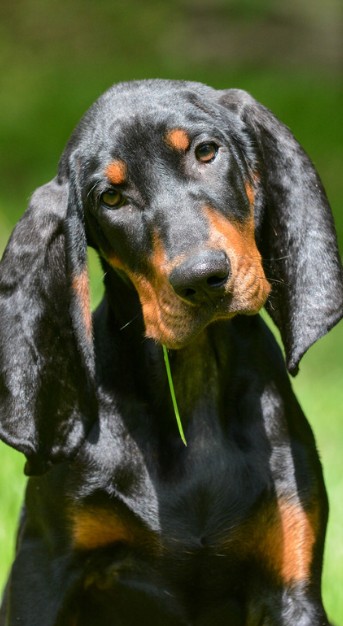
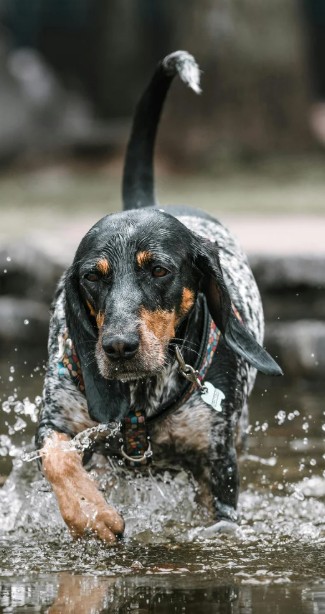
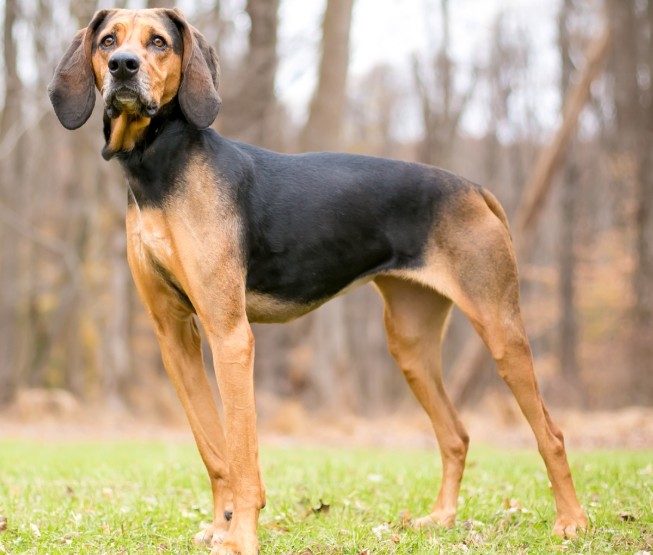
Each breed tells a story. From gentle Black and Tans to spirited Treeing Walkers, the six Coonhound varieties embody both soulful devotion at home and tireless drive in the field.
Nutritional Recommendations: Fueling Your Active Companion
Understanding Your Coonhound’s Dietary Needs
Your Coonhound’s nutritional requirements reflect their athletic build and high energy levels. These aren’t dogs that do well on bargain-basement kibble—they need quality nutrition to maintain their muscle mass, support their joints, and fuel their adventures.
Working Coonhounds require 25-35% more calories than companion dogs, but even family pets need substantial nutrition. An adult typically needs 2-2.5 cups of high-quality dry food daily, divided into two meals to reduce bloat risk. However, individual needs vary based on age, activity level, and metabolism. You’ll know you’re feeding the right amount when you can feel but not see ribs, and your dog maintains steady energy throughout the day.
Quality matters more than quantity. Look for foods with named animal proteins (chicken, beef, lamb) as the first ingredient. Avoid foods with mysterious “meat meal” or excessive fillers. Your Coonhound’s ancestors thrived on a diet of quality protein and fat—while we’ve modernized delivery methods, their nutritional needs remain similar.
Special Dietary Considerations
Over 20 years of rescue experience has shown interesting patterns in Coonhound health related to diet. Many Coonhounds experience digestive sensitivities with grain-heavy diets, showing symptoms like chronic ear infections, skin issues, and soft stool. While true grain allergies affect less than 1% of dogs, food sensitivities are more common and often resolve with dietary adjustments.
Consider these dietary modifications if your Coonhound shows signs of sensitivity:
- Limited ingredient diets to identify triggers
- Higher moisture content foods (raw or wet food) for better hydration
- Probiotics and digestive enzymes to support gut health
- Omega-3 fatty acids from fish oil for skin and coat health
Joint support becomes increasingly important as your Coonhound ages. Glucosamine, chondroitin, and MSM supplements can help maintain mobility. Some owners report excellent results with natural anti-inflammatories like turmeric, though always consult your veterinarian before adding supplements.
Life Stage Nutrition: From Puppy to Senior
Puppy Coonhounds need frequent meals—3-4 times daily—with higher protein and calorie density to support rapid growth. Brain development nutrients like DHA are crucial during these formative months. Resist the urge to overfeed, as excess weight during growth can stress developing joints.
Adult Coonhounds do best on twice-daily feeding schedules. This routine helps prevent bloat while maintaining steady energy. Adjust portions seasonally—your dog might need more calories during hunting season or winter months when they’re more active or burning energy to stay warm.
Senior Coonhounds benefit from foods with cognitive support nutrients to maintain mental sharpness. You might need to reduce calories if activity decreases, but maintain protein to prevent muscle loss. Joint support supplements become essential, and some seniors do better with smaller, more frequent meals if digestion becomes sensitive. 🧡
Health Concerns: Protecting Your Coonhound’s Wellbeing
Common Health Challenges and Prevention
Understanding potential health issues helps you provide preventive care and recognize problems early. Coonhounds, bred primarily for function rather than form, generally enjoy good health, but certain conditions appear regularly in the breeds.
Hip Dysplasia affects many Coonhounds, particularly larger varieties. This genetic condition involves improper hip joint formation, leading to pain and arthritis. While genetics play a role, environmental factors matter too. Maintaining appropriate weight, avoiding excessive jumping during puppyhood, and providing joint supplements can help manage this condition. Watch for signs like difficulty rising, bunny-hopping gait, or reluctance to climb stairs.
Ear Infections plague many Coonhounds thanks to those beautiful, long ears that trap moisture and debris. Weekly ear cleaning isn’t optional—it’s essential maintenance. Use a veterinary-approved cleaner, and learn to recognize early signs of infection: head shaking, scratching, or unusual odor. Catching infections early means simpler treatment and less discomfort for your friend.
Bloat (Gastric Dilatation-Volvulus) represents a life-threatening emergency in deep-chested breeds. The stomach fills with gas and can twist, cutting off blood supply. Prevent bloat by feeding multiple smaller meals, avoiding exercise immediately after eating, and using slow-feeder bowls if your dog gulps food. Know the signs—unsuccessful vomiting attempts, distended abdomen, restlessness—and have an emergency plan, as immediate veterinary intervention is crucial.

Maintaining Long-Term Health
Proactive healthcare extends both quality and quantity of life. Regular veterinary checkups catch problems early, when treatment is most effective. Between visits, you’re your dog’s best health advocate.
Dental health often gets overlooked but significantly impacts overall wellbeing. Regular brushing prevents periodontal disease, which can affect heart and kidney health. If brushing proves challenging (and with an independent Coonhound, it might), dental chews and water additives help maintain oral health.
Weight management becomes increasingly important with age. Those soulful eyes begging for treats are hard to resist, but maintaining lean body condition reduces stress on joints and organs. Use vegetables like carrots or green beans as low-calorie treats, and remember that food isn’t the only way to show love—attention, play, and adventure mean just as much.
Lifestyle & Environment: Creating Your Coonhound’s Perfect World
Exercise Requirements: Meeting Their Physical Needs
Let’s be honest about exercise needs: Coonhounds require substantial daily activity. The minimum 60-90 minutes daily isn’t a suggestion—it’s a requirement for physical and mental health. Bluetick Coonhounds often need even more, with 90+ minutes being typical. Without adequate exercise, you’ll see destructive behavior, excessive vocalization, and a generally unhappy dog.
But exercise isn’t just about duration—variety matters. A neighborhood walk provides different stimulation than a hike in the woods. Swimming exercises different muscles than running. Scent work engages the brain differently than fetch. Rotating activities keeps your Coonhound engaged and prevents boredom.
Signs your Coonhound needs more exercise include:
- Destructive behavior (especially chewing or digging)
- Hyperactivity or inability to settle
- Excessive vocalization or attention-seeking
- Weight gain despite controlled diet
- Nighttime restlessness or pacing
Remember, a tired Coonhound is a good Coonhound, but mental tiredness often matters more than physical exhaustion. A 30-minute scent work session might tire your dog more effectively than an hour-long walk.
Home Environment: Space and Setup
Coonhounds aren’t apartment dogs—they need space to move and vocalize without disturbing neighbors. The ideal environment includes a large, securely fenced yard where they can patrol, investigate smells, and occasionally announce their findings to the world.
That fence needs to be secure and tall—at least 6 feet. Some Coonhounds climb, others dig, and most will find any weakness in your containment system. Regular fence inspections prevent escape attempts that could end tragically given their tendency to follow scents without regard for traffic or other dangers.
Inside, your Coonhound will claim favorite spots—usually wherever you are. Despite their size, many become “lap dogs” when given opportunity. Provide comfortable bedding in family areas so they can be near their people while respecting furniture rules (if you have them—many Coonhound owners eventually surrender the couch).
Climate Considerations
Your Coonhound’s short, smooth coat offers limited protection in harsh weather. Northern winters require consideration—perhaps a coat for walks and definitely warm indoor resting spots. Some Coonhounds develop thick undercoats seasonally, but many need help staying warm.
Summer presents different challenges. While generally heat-tolerant, their high activity levels increase dehydration and overheating risk. Always provide fresh water, shade, and avoid intense exercise during peak heat. Many Coonhounds love kiddie pools for cooling off—a simple solution for hot days.
Family Integration: Your Coonhound as Family Member
Coonhounds and Children: Natural Companions
The patience and gentleness Coonhounds show with children often surprises those who know them only as determined hunters. Their sturdy build handles enthusiastic child interaction, while their emotional intelligence helps them understand that small humans need special care.
Supervision remains important, not because of aggression concerns but because of size and enthusiasm. A happy Coonhound tail at child-face height can cause accidents, and their exuberant greetings might knock over small children. Teaching both children and dogs appropriate interaction prevents problems.
Children old enough to participate in training and exercise become special friends to Coonhounds. The dog gets additional activity and attention, while children learn responsibility and empathy. Many owners report their Coonhounds become protective of “their” children, alerting to strangers while remaining gentle with familiar faces.
Multi-Pet Households: Pack Dynamics
Coonhounds’ pack hunting heritage makes them excellent multi-dog household members. They generally get along well with other dogs, especially when energy levels match. Two Coonhounds often entertain each other, reducing demands on human family members while satisfying social needs.
Small pets present challenges due to prey drive. While some Coonhounds coexist peacefully with cats (especially when raised together), others never lose the urge to chase. Realistic assessment of your individual dog’s prey drive helps make safe decisions about additional pets. Never leave a Coonhound unsupervised with small animals, regardless of previous behavior.
The Social Coonhound: Friends and Strangers
Your Coonhound’s social nature means they’re more likely to follow strangers than bark at them—not ideal for guard dog duties but wonderful for social families. They typically greet visitors enthusiastically, which might require management if guests aren’t dog people.
This sociability extends to public spaces. Coonhounds often become neighborhood favorites, known for their friendly nature and distinctive voices. However, their tendency to vocalize opinions about passing dogs, interesting smells, or the audacity of squirrels means you’ll need to be a considerate neighbor yourself.
Senior Care: Golden Years with Your Coonhound
Aging Gracefully: What to Expect
Coonhounds typically live 10-15 years depending on breed, with proper care extending both lifespan and quality of life. As your companion ages, you’ll notice gradual changes—perhaps less enthusiasm for long hikes, more afternoon napping, or slower responses to commands.
Physical changes might include graying muzzles, cloudier eyes, and decreased muscle mass. Some seniors develop arthritis, making previously easy movements challenging. Cognitive changes can occur too—confusion, disrupted sleep patterns, or increased vocalization might indicate cognitive dysfunction syndrome.
These changes don’t mean your senior can’t enjoy life—they just need adjustments. Shorter, more frequent walks replace marathon hikes. Puzzle feeders provide mental stimulation without physical stress. Raised food bowls ease eating for arthritic necks.
Comfort and Care Modifications
Senior Coonhounds benefit from environmental modifications that accommodate aging bodies. Non-slip rugs prevent falls on smooth floors. Ramps help them access favorite spots without jumping. Orthopedic beds support aging joints, and heating pads provide comfort for arthritis.
Dietary adjustments support senior health. Some older dogs need fewer calories to prevent weight gain, while others need more digestible proteins to maintain muscle mass. Senior-specific foods often include joint support and cognitive function nutrients. Smaller, more frequent meals might suit sensitive stomachs better.
Veterinary care becomes increasingly important. Bi-annual checkups catch problems early, when intervention is most effective. Blood work monitors organ function, while regular weight checks ensure you’re meeting nutritional needs. Don’t dismiss changes as “just aging”—many senior issues are treatable, significantly improving quality of life.
Making Difficult Decisions
Eventually, you might face difficult decisions about your Coonhound’s quality of life. Their stoic nature means they might hide pain, making your observation crucial. Watch for changes in appetite, mobility, interest in activities, or bathroom habits.
Quality of life scales help objective assessment during emotional times. Consider: Does your dog have more good days than bad? Can they do things they enjoy? Are they in manageable pain? These questions guide compassionate decisions.
Remember, choosing to prevent suffering is a final act of love. Many owners report knowing when “it’s time”—trust your instinct and your knowledge of your companion. Celebrate the life you’ve shared while making decisions that prioritize their comfort and dignity. 🐾
Conclusion: Is a Coonhound Right for You?
The Honest Assessment
After exploring every aspect of Coonhound ownership, let’s be completely honest about what these remarkable dogs require. You need substantial time for daily exercise—not just physical activity but engaged, varied stimulation that satisfies their working dog needs. You need patience for training an independent thinker who might prioritize interesting smells over your commands. You need tolerance for vocalization that expresses everything from joy to concern. And you need space—both physical and social—for a dog whose voice carries and whose energy demands outlet.
These aren’t dogs for everyone. Apartment dwellers, sedentary lifestyles, or those seeking immediate obedience will find Coonhounds challenging. Their exercise needs aren’t negotiable, their voices aren’t silent, and their independence isn’t changing. If you need a dog who lives to please you, looks to you for every decision, or thrives in small spaces, keep looking—Coonhounds aren’t your match.
The Remarkable Rewards
But for the right owner, Coonhounds offer incomparable companionship. Their loyalty runs deep—once you’re family, you’re family forever. Their enthusiasm for life is contagious, turning routine walks into adventures and quiet evenings into cuddle sessions with a 60-pound lap dog. Their emotional intelligence creates deep bonds, with dogs who genuinely care about your feelings and express their own with touching honesty.
You’ll never be alone with a Coonhound. They’ll supervise your cooking, assist with yard work (squirrel patrol is serious business), and ensure you’re never lonely during illness. Their pack mentality means they’re all-in on family life, participating enthusiastically in everything from birthday parties to lazy Sunday mornings.
The challenges of Coonhound ownership—the exercise needs, the training patience, the vocal expressions—become part of life’s rhythm. Many owners report they can’t imagine life without the morning bay announcing the mail carrier or the evening snuggle sessions with their “professional couch warmer.”
Making Your Decision
If you’re still reading, still interested despite the challenges, you might be Coonhound people. Consider fostering first—many rescues need temporary homes, giving you real-world experience before committing. Visit breed-specific events where you can meet various Coonhounds and their owners. Join online communities where experienced owners share honest insights.
Remember, choosing a Coonhound isn’t just getting a dog—it’s embracing a lifestyle. Morning hikes become routine. Weekend adventures replace lazy mornings. Your social circle might shift toward fellow dog people who understand why you can’t make evening plans during prime exercise time.
But you’ll gain a companion whose loyalty never wavers, whose enthusiasm never dims, and whose love never questions. You’ll experience the satisfaction of earning an independent dog’s respect and cooperation. You’ll join a community of owners who understand that the challenges are worth the rewards.
Your Next Steps
If you’ve decided a Coonhound might be your perfect match, take time to research specific breeds. Each variety offers slightly different characteristics—perhaps the gentle Black and Tan suits your family, or maybe the energetic Redbone matches your active lifestyle.
Contact breed-specific rescues where you can meet adult dogs with established personalities. While puppies are adorable, adult Coonhounds often need homes and come with known temperaments. Rescue organizations provide support and guidance, helping ensure successful matches.
Prepare your home and life for your new companion. Install secure fencing, research trainers experienced with hounds, and establish relationships with veterinarians familiar with the breeds. Stock up on puzzle toys, long lines, and patience—you’ll need all three.
Most importantly, prepare your heart. Coonhounds don’t do anything halfway, including love. Once you’re theirs, you’re theirs forever—through muddy paws and midnight baying, through successful recalls and ignored commands, through young dog energy and senior dog dignity.
Welcome to the world of Coonhounds—where every day brings adventure, every walk tells a story, and every bay sings of centuries of partnership between humans and hounds. Your life is about to become louder, busier, and infinitely richer. Are you ready for the journey of a lifetime with one of America’s most remarkable dogs? 🧡
The moon is rising, the trail is calling, and somewhere, a Coonhound is waiting for their perfect person. Could that person be you?

